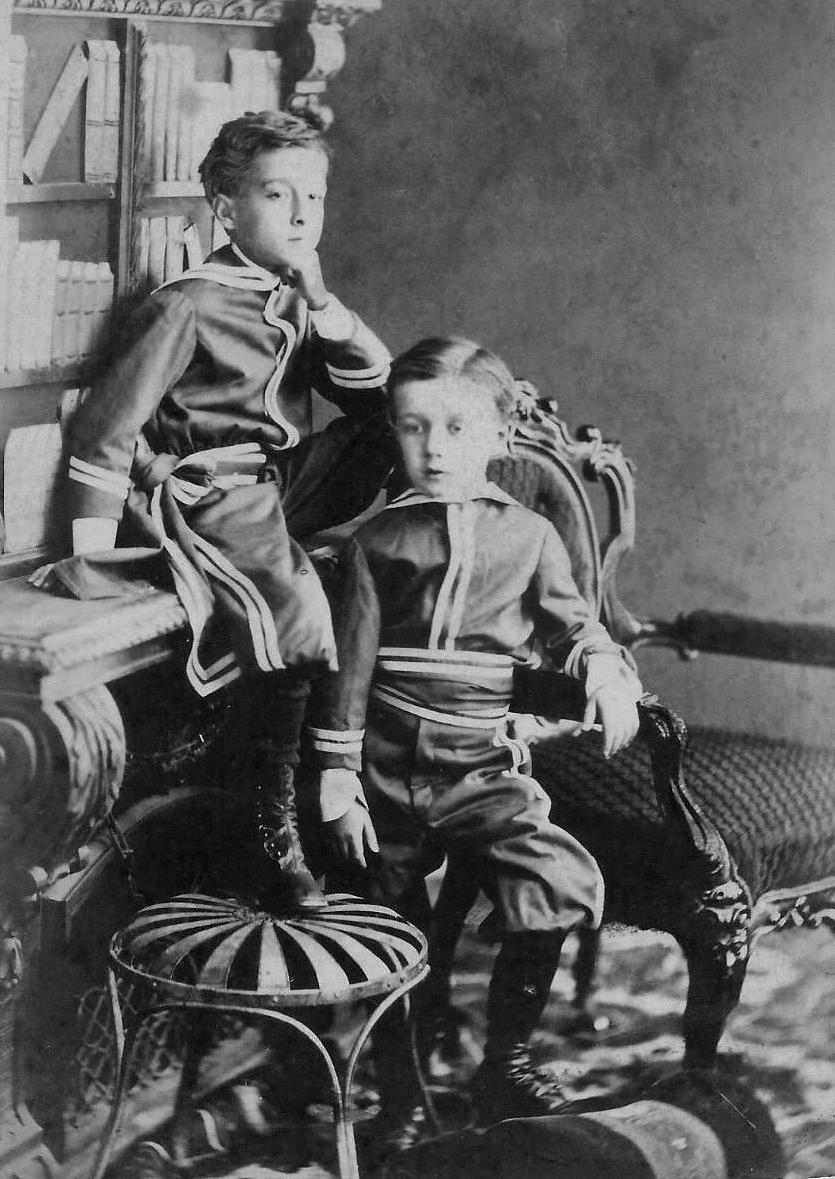
Figure 1.--This cabinet card shows the younger sons of Tsar Aklexabder II, Grand Duke Sergei and Grand Duke Paul about 1865. They are wearing sailor suits. The outfits do not have the V-front, but do have elaborate striping and a back flap. |


|
The royal couple, Alexander II and Tsarina Maria Alexandrovna, as wasccommon for Russuan riyals had a large family. There were eight legitimate children. Seven of the children survived into adulthood. There were six boys and two girls. The eldest was Alexandra Alexandrovna (1842-49), but she died as a small child. Daughters were not entitled to inherit the throne. Nicholas Alexandrovich was the Grand Prince Thronfolger (1843-65), and the Tsarevitch. The Tsar had great hopes for him. He died, however, of tuberculosis as a young man. Alexander Alexandrovich (1845- ) as a result of the death of his elder brother became the Tsarevitch. A rift developed, however, with his farher as a result of duffereing political outlooks. He rose to the throne as Tsar Alexander III. His inflexible absolutism would be a factor in the Revolution which eventually sweot Russia. The other children were: Grand Duke Vladimir Alexandrovitch (1847- ), Grand Duke Alexis Alexandrovich (1850- ), Grand Duchess Marie Alexandrovna (1853- ), Grand Duke Serge Alexandrovich (1857- ), and Grand Duke Paul Alexandrovich (1860- ). The Tsar when the Tsarina fell ill took a mistriss abd had additional, albeit illigitimate children.
The eldest was Alexandra Alexandrovna (1842-49), but she died as a small child. Daughters were not entitled to inherit the throne.
The Tsar after visuring Berlin continued on with his third son, Alexei, accompanying him to England. It was a somewhat low-key visit, not an official state visit. The Tsar wanted to visit with his daughter. There were , he nevertheless receptions at Buckingham Palace and Marlborough House, an inspection of the the artillery at the Royal Arsenal in Woolwich, and a review of troops at Aldershot. He met with both Prime Minister Benjamin Disraeli and leader of the opposition, William Gladstone. Disraeli observed that "his mien and manners are gracious and graceful, but the expression of his countenance, which I could now very closely examine, is sad. Whether it is satiety, or the loneliness of despotism, or fear of a violent death, I know not, but it was a visage of, I should think, habitual mournfulness." [Van Der Kiste, p. 75.]
The Tsar was particularly fond of his second, and only surviving daughter, Grand Duchess Marie Alexandrovna. A diplomatic spat developed betwwn the Russian and British royal family (1873). Queen Victoria's second son, Prince Alfred, decided that he wanted to marry the Grand Duchess. The Tsar was offended to the Queen's request that his daughter come to England in order to meet. And even after the wedding in St. Petersburg there were problems (January 1874). The Tsar demanded that his daughter be granted precedence over the Princess of Wales in public and court events. Quenn Victoria refused.
Grand Buke Sergei Alexandrovichhe married Princess Elisabeth of Hesse and by Rhine (1884).
Grand Duke Paul married Princess Alexandra of Greece and Denmark (1889). They had two children. He remarried Olga Karnovich (1902). They had three children. The Grand Duke remained at his palace in Tsarskoe Selo after the Revolution during the period of the Provisional Government. The Bolsheviks seized his palace and eventually arrested him. His health deteriorated. The Bolsheviks him and other Romanovs in the courtyard of the Peter and Paul Fortress at the ionset of the Civil War (January 1919). Their remins were thrown into a common grave.
The Tsar when the Tsarina fell ill took a mistriss abd had additional, albeit illigitimate children.
Navigate the Boys' Historical Clothing Web Site royal pages:
[Return to the Main Alexander II page]
[Austria]
[Belgium]
[Bulgaria]
[Denmark]
[France]
[Germany]
[Italy]
[Japan]
[Jordon]
[Luxemburg]
[Monaco]
[Netherlands]
[Norway]
[Romania]
[Russia]
[Spain]
[Sweden]
[United Kingdom]
[Yugoslavia]
[Return to the Main royal pages]
